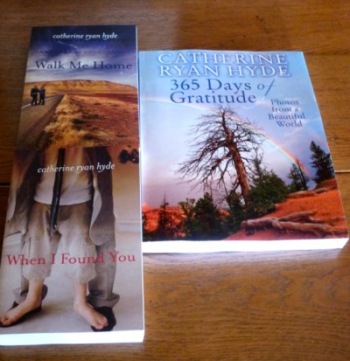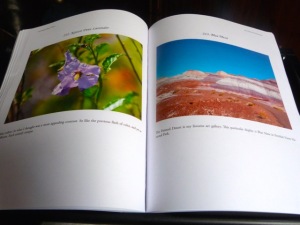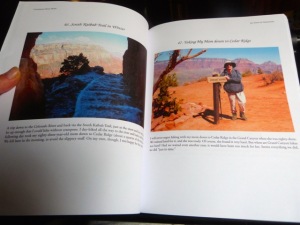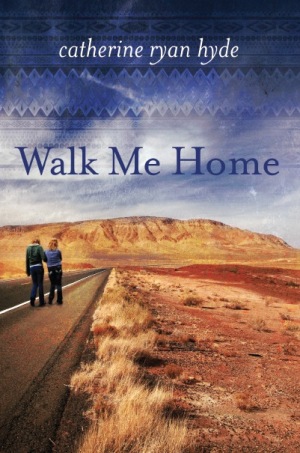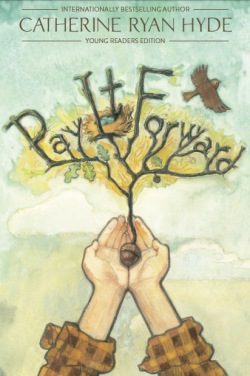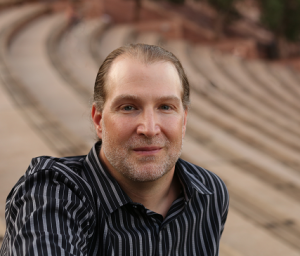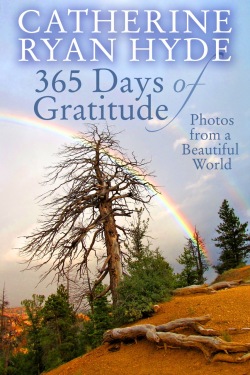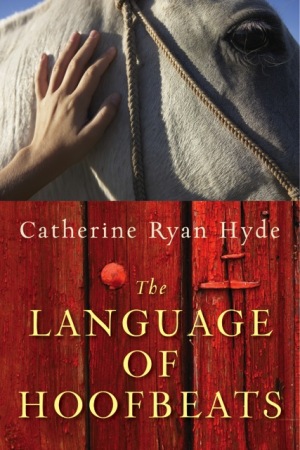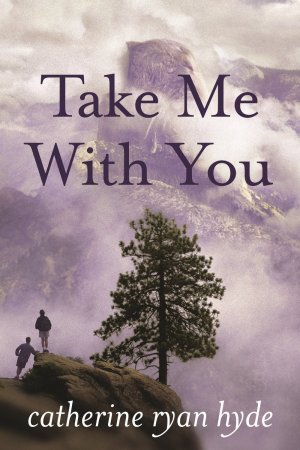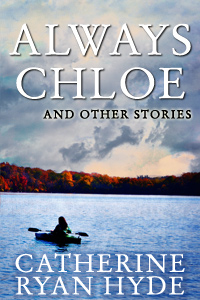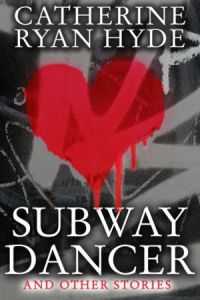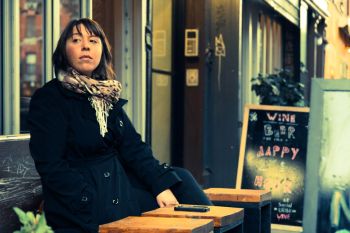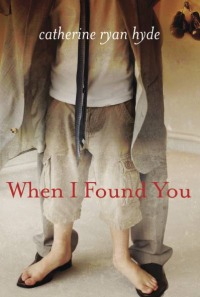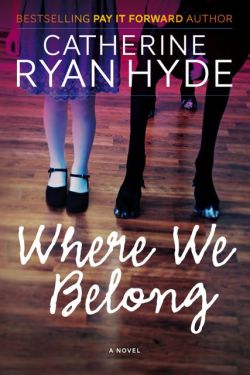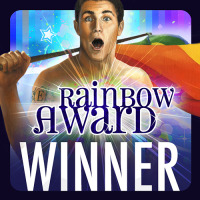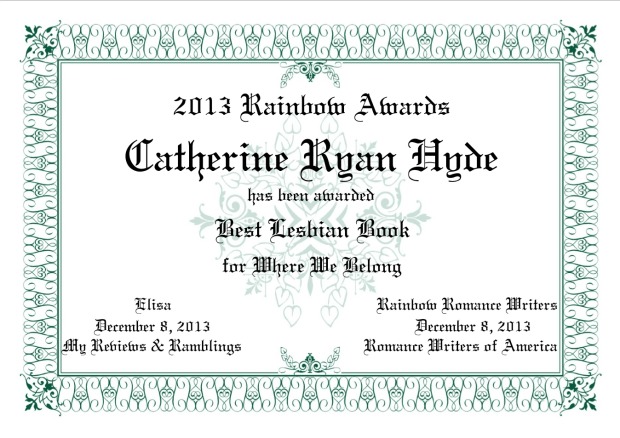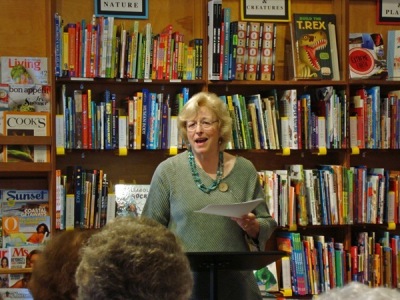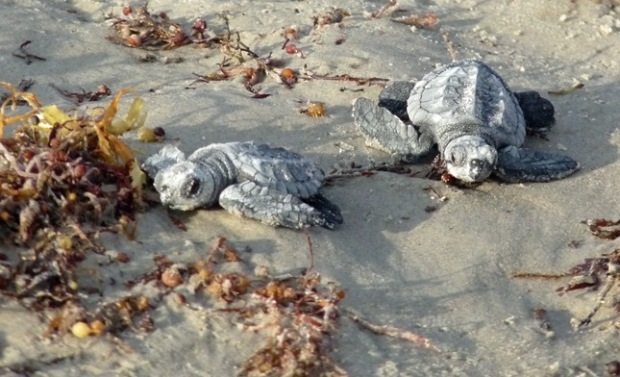Me: Let's start in the usual way. Aaron, please tell us about the book in your own words.
Aaron: Long Live the Suicide King came out of my own experiences with addiction, depression, and suicidal ideation.
Well, that’s not a very happy way to start, but I did get to use the word “ideation” which is cool. Yes, it’s a contemporary YA novel with addiction, depression, and suicide in it, but it’s more of a young man’s search for meaning in this beautiful, broken world. And the book is funny because the world is funny and good. A bad world wouldn’t have donuts, and we have donuts. I could say don’t read it for the deep, spiritual themes, read it for the donuts.
Uh oh, now I’m talking about spiritual themes, which leads people to think I’m talking about religion, which is going to alienate readers. Dang. What was the question again? My own words. My book in my own words.
Friendship, meaning, desire, kindness, selflessness, compassion, sorrow, death, divorce, mocha lattes, and race relations in America. Oh, and Christianity, Buddhism, atheism, and Geddy Lee from the progressive rock band Rush. These are a few of my favorite things.
Okay, now that I’ve confused everyone. I’m ready to start the interview.
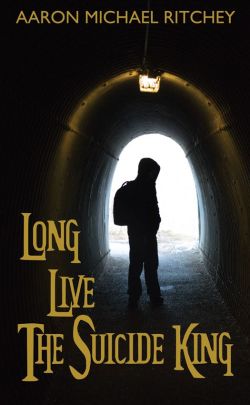 Me: You strike me as someone who could write just about any damn thing you please and do it well. What drew you to YA fiction? It’s okay to be honest if the answer is the health and fitness of that genre in an otherwise ailing industry. But if there’s something that draws you to YA, I’d like to hear about it. Will you always write YA, or is this just one of many directions you see yourself going?
Me: You strike me as someone who could write just about any damn thing you please and do it well. What drew you to YA fiction? It’s okay to be honest if the answer is the health and fitness of that genre in an otherwise ailing industry. But if there’s something that draws you to YA, I’d like to hear about it. Will you always write YA, or is this just one of many directions you see yourself going?
Aaron: Gosh. Thanks, Catherine. Gosh.
About genre. Genre! Why do you task me so?
Short answer is that I spent the first ten years of my writing working on doorstop-sized multi-genre masterpieces no one could read. Part sci-fi, part epic fantasy, part Russian novel, part lost Gnostic gospel. I couldn’t pitch these books. I didn’t know how to talk about them. They were too epic!
And then I read Harry Potter and the Goblet of Fire. And I said, hey, what about doing a book like that? Then I sarted reading YA, and boom, I could write cross-genre novels, call them YA, and they would have a shelf to sit on.
But more than genre, having young adult readers is awesome and talking books with teens is fun, and there’s just so much excitement there. My YA books have an edge, though. They’re not happy angels or lovesick werewolves. At the same time, they aren’t full of eviscerations and R-rated skinny dippings.
And I like that. My parents can read my books, grandmothers can read my books, I’ve cornered the YA market for octogenarian nuns (I have two such fans), and I don’t have to be embarrassed by what’s inside.
Will I always write YA? I think so. I like the characters, I like the conflict. I like the coming of age themes. Someday I’ll come of age. I have faith.
Me: What do you say to Meghan Cox Gurdon? For those (fortunately, in my opinion) unfamiliar, she is the author of the Wall Street Journal article “Darkness too Visible,” criticizing YA fiction for not being cheerier.
Aaron: I wasn’t familiar with the article, but I’ve thought about all of those things while I was working on my books.
I think there is a line drawn between YA and adult books. A definite line, and I would argue that line is more about rating than genre.
I approach that line, but I don’t cross it. My books are rated a solid PG-13. In real life, all of my characters would walk around cursing with staggering grammatical displays of vile genius, but what’s the point of that? To show I can cuss?
In some ways I agree with her. If someone is throwing F-bombs and going into graphic details about sexual abuse, is that YA? Yeah, I’m thinking the author crossed the line and it becomes an adult book with YA characters. Most readers read up, so really, a lot of the YA readers are in middle grade. Something I keep in mind.
So rating is one thing, genre is another.
Darkness, violence, despair, troubling sexuality, all fit perfectly fine in the YA genre.
For example, I found adolescence horrific. Suddenly, the fairy tales of my youth were stripped away and I was presented with reality, where people do cut themselves, people are sexually abused, and bad stuff happens.
I couldn’t run back into the fairy tales. Once you know the world is broken, you know.
Instead, I read lots and lots of Stephen King because I had this passion to try and understand the gore, the horror show, the nightmares. Which I think is why teens are drawn to darker themes in YA literature.
As a writer, I’m still trying to understand the suffering, sadness, and sorrow in the world. And what’s a better way to do that than walking with someone who is in the middle of suffering, sorrow, sadness? [Me, note: I agree completely. You don't pretend there is no darkness. You light a path through it.]
Jackie Morse Kessler’s Riders of the Apocalypse series is brilliant. In Hunger, an anorexic teenager becomes Famine. Is it all prettiness and sparkling vampires? Uh no. Is it real, gritty, gruesome? Yes. Is there hope and salvation? Yes. Because a key component in many YA novels is change.
One last F-word on this subject. In Long Live the Suicide King I use the F-word once. I debated long and hard if I should keep it in. Then I talked with a fourteen-year-old hardcore homeschooled Christian kid about it, and he said, “Keep it real, man. If you can’t curse God, who can you curse?” So it stayed. It fits. And I use it once.
Me: You said a few things to me that suggested that the road to publication didn’t go the way you expected. Of course you realize that doesn’t make you stand out much among your fellow authors. It really just makes you… a writer. Please tell us as much as you are willing to tell about your writer’s journey. The brick walls, the eventual breaks. (Breaks in the wall, breaks in you—we’re wide open here.)
Aaron: Oh, Catherine, oh me, oh life. I wanted to be rich, famous, lauded as a genius, given keys to cities, honorary degrees, lear jets. Instead, I write words, unagented, ignored by the big huge publishing industry, and really without a lot of external praise and certainly not the adoration I want.
Which is probably good in the long run. I can totally see me Lindsay Lohanning into flames.
I’m like a guy who couldn’t find a prom date. I went around and asked all these agents and editors to go to the prom with me, and they all said no.
I went to prom anyway. I might be out on the dance floor by myself, but I’m publishing books I adore, and I’m dancing.
And I’m not alone. I’m dancing with editors from small presses, I’m dancing with other writers, and I’m dancing with readers.
But make no mistake, I’m dancing.
Me: I love Inga Blute. And her dog. I think she makes a great counterpoint of light to play off JD’s darkness. And I think she’s a wonderful way for the reader to see the value of life, even if the protagonist currently can’t. Okay, that’s a comment. It’s not so much a question. But if you wanted to speak to her character for a bit—what she means to you, how it felt to write her, what part she played in the development of the story in your head—that would be a good thing.
Aaron: Inga in a very real sense saved the book. Thanks, Inga! But guess what? She wasn’t in the first drafts. After getting feedback from beta readers and contest judges, I knew some people just didn’t like JD, my main character, my POV character! So I knew I needed to add someone who would let the readers know that JD is a good guy. He’s a hot, suicidal mess, but he’s still a good guy.
That’s where Inga comes in. JD takes care of her, worries over her, and in the end, is transformed because of some of the things she said.
Inga wrote herself. I would sit down, and she would tell me things, and I would write them down. Not to spoil anything, but I had no idea that she had a long history of mental illness before I wrote her scenes.
Yeah, I love Inga too. And Schatzi, her very happy dog.
Me: I’m interested in your choice of an overtly Christian teen character, Marianne Hartley. Her religion is, of course, at predictable odds with your protagonist. But as the books goes on, she becomes more and more layered and human. Refreshingly so. There’s such an enormous rift this days between the religious and the secular. Talk to us, please, about your choice to bring her into the story.
Aaron: Yes, there is an unfortunate rift between the religious and the secular. Not to make a gross generalization, but too often the religious can be ignorant and the secular can be narrow-minded. Gross generalization. Ew.
Both sides should remember that trying to understand God is like trying to pour an ocean into a thimble.
While Inga has rebellious, heretical theology as far as God is concerned, Marianne Hartley seems like a goody-two shoes Christian girl who prays to Jesus at night, does her homework, and reads Sweet Valley High novels. No dark YA for Marianne Hartley.
JD think he has her all figured out. Except one of the major themes in the book is the Grand Canyon gap between our perceptions and reality.
Marianne is human. Painfully so. Between her and Inga, they give JD the answers he needs. I have lots about God in my book, which I know will push some readers away, but these are the books I was born to write.
I love being an atheist. I can’t accept any sort of god running the universe. And I love being a Catholic, because how can there not be a God?
If God can’t be bigger than that paradox than he’s like some crappy Walmart god and shouldn’t exist.
I’ve known lots of girls like Marianne Hartley. Not in the biblical sense either. So that was some of my own history shining through. And I’ve learned, as JD does, don’t compare your insides with other people’s outsides.
Me: I won’t do spoilers, but when we find out more about what has this guy in such a dark place, it feels very textured and honest and real. There was another very successful book on teen suicide; I’ll let it be nameless. I never bought the suicidal reasoning in that one. I think that, unless we are suffering from overwhelming depression already, we don’t want to kill ourselves because we blame others, or because of our opinion of others, or because of what others do. I think the problem is with ourselves. How much did your personal experience inform these choices? Or is there a place early on in the writing process where imagination kicks in and Jimmy is just different, just himself? Or both?
Aaron: My book really is an autobiographical novel.
And I had trouble with that other nameless suicide book as well.
If you haven’t been in front of a mirror, trying to slash your wrists, I think the average non-suicidal person likes the idea that people kill themselves because of some specific reason. The Ordinary People reason for suicide. I let my brother drown, so now I want to die.
It’s clean. It’s tidy. It makes sense. I couldn’t write a suicide book like that. That wasn’t my experience. Like JD, I had all the outside stuff, but I needed meaning. I needed answers. My brain doesn’t work sometimes and I needed help to manage my thinking, which can be horribly negative.
There’s an old joke about two kids on Christmas morning. One wakes up to a roomful of toys, and one wakes up to a roomful of horse poop. The first kid plays with some of the toys, gets bored, gets angsty, and wanders off. That’s me. Give me a roomful of toys, and I’m going to tell you in great detail, which toy is missing, why the toys aren’t right, and why life sucks.
The other kid? He is playing around in the horse poop, running around, all happy. Someone finally asks him, “Hey kid, what’s your damage?”
He replies, happily, “With all this manure around, there must be a pony in here somewhere.”
That’s who I want to be.
Me: What’s next? Do you have another novel “in the can?” If so, how much are you willing to tell us about it, and when do we get to find out for ourselves? In what ways is it like Long Live the Suicide King? In what ways is it unique? If you don’t have anything else finished, you can just imagine where you’ll go from here and answer anyway.
Aaron: Actually, I’m juggling four different projects, all so much fun. I got a contemporary romance (very different), I got a YA sci-fi romance (Blade Runner meets Twilight), I have a YA steampunk family drama (very Firefly), and I have what I hope will be my next published book, Elizabeth’s Midnight. I’m in talks with another small press, but I haven’t signed a contract yet.
Elizabeth’s Midnight is a contemporary YA with fantasy elements. Oh, it’s so great. It has France in it, and treasure hunting, and love, and doing the impossible.
It’s about an overweight, emotionally handicapped teen who finds herself on the run with her grandmother. Both are being chased by the teen’s mother, who wants to stop them from travelling to France to see the grandmother’s lover from World War II. You don’t know if the grandmother is crazy and lying, or if she is telling the truth about her lost love, since yeah, she claims he’s a sorcerer-prince from another world.
It really is a sweet book, solid PG, and Meghan Cox Gurdon would approve.
However, there is some darkness in the book. Elizabeth starts out so shut-down, so out to lunch, and her mom is such a monumental dragon lady. But those are the characters I like: real, hurt and hurting, dragging themselves through their days until that special something happens, that spark, which drives the wounded character forward until they find healing.
And we can be healed in this world. Perhaps, that is exactly why we are here in the first place. To find healing. To find a home.
So we can dance and dance.
Life is sweet.
Me: (Everybody gets this one:) Please write your own question, and answer it.
Aaron: Your questions were so good! I couldn’t add another one! Perfect interview!
My bio:
Aaron Michael Ritchey's first novel, The Never Prayer, was published in March of 2012 to a fanfare of sparkling reviews including an almost win in the RMFW Gold contest. Since then he's been paid to write steampunk, cyberpunk, and sci-fi western short stories, two of which will appear in a new fiction magazine, FICTIONVALE. His next novel, Long Live the Suicide King, will give hope to the masses in April of 2014. As a former story addict and television connoisseur, he lives in Colorado with his wife and two ancient goddesses posing as his daughters.
For more about him, his books, and how to overcome artistic angst, visit www.aaronmritchey.com. He's on Facebook as Aaron Michael Ritchey and he tweets - @aaronmritchey.
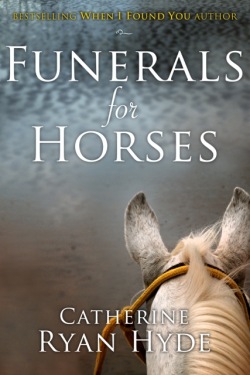 My wonderful agency and I took a look back recently. When we first put out our own independent ebook editions of my backlist novels Funerals for Horses, Electric God, and Walter's Purple Heart, we didn't really know what to expect. We didn't know how much interest there would be for these titles. Plus, I was working on a shoestring.
My wonderful agency and I took a look back recently. When we first put out our own independent ebook editions of my backlist novels Funerals for Horses, Electric God, and Walter's Purple Heart, we didn't really know what to expect. We didn't know how much interest there would be for these titles. Plus, I was working on a shoestring.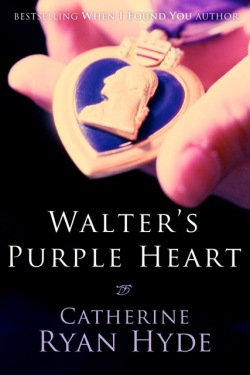 The titles are doing quite well, I'm happy to say, due to a great number of wonderful new readers (thank you, wonderful new readers!) who are going through the full body of my work.
The titles are doing quite well, I'm happy to say, due to a great number of wonderful new readers (thank you, wonderful new readers!) who are going through the full body of my work.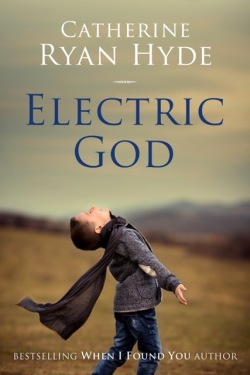 We all agreed it was time to give these ebooks a makeover. Help them stand right up there with my newer titles.
We all agreed it was time to give these ebooks a makeover. Help them stand right up there with my newer titles.
